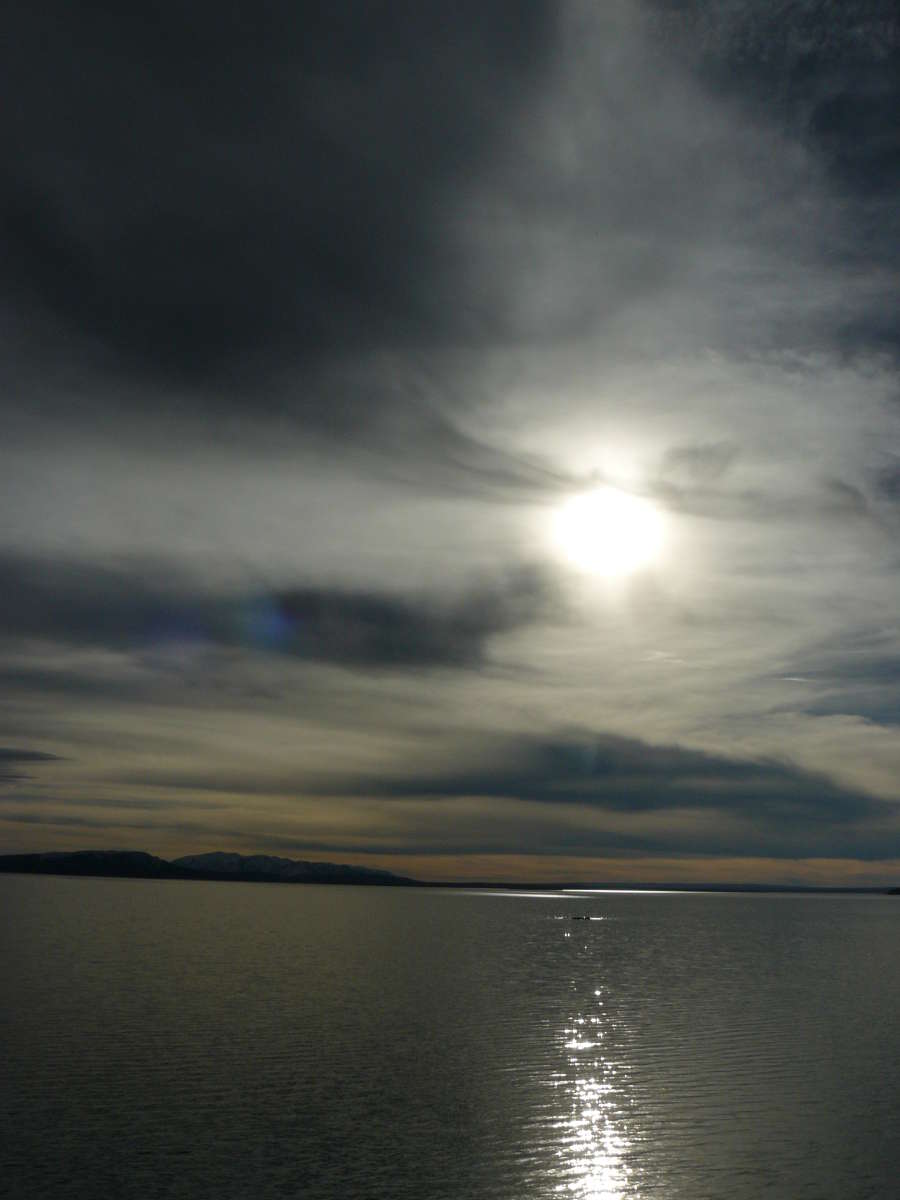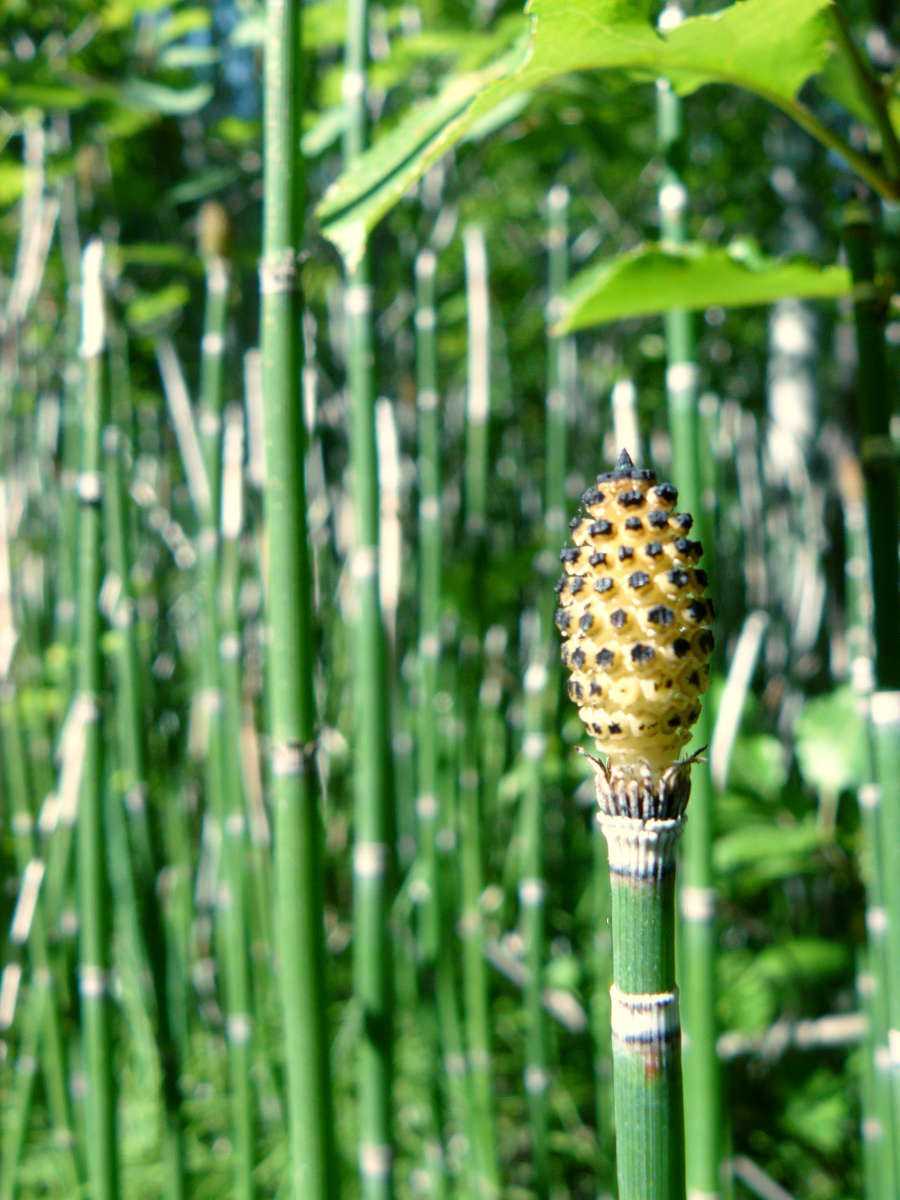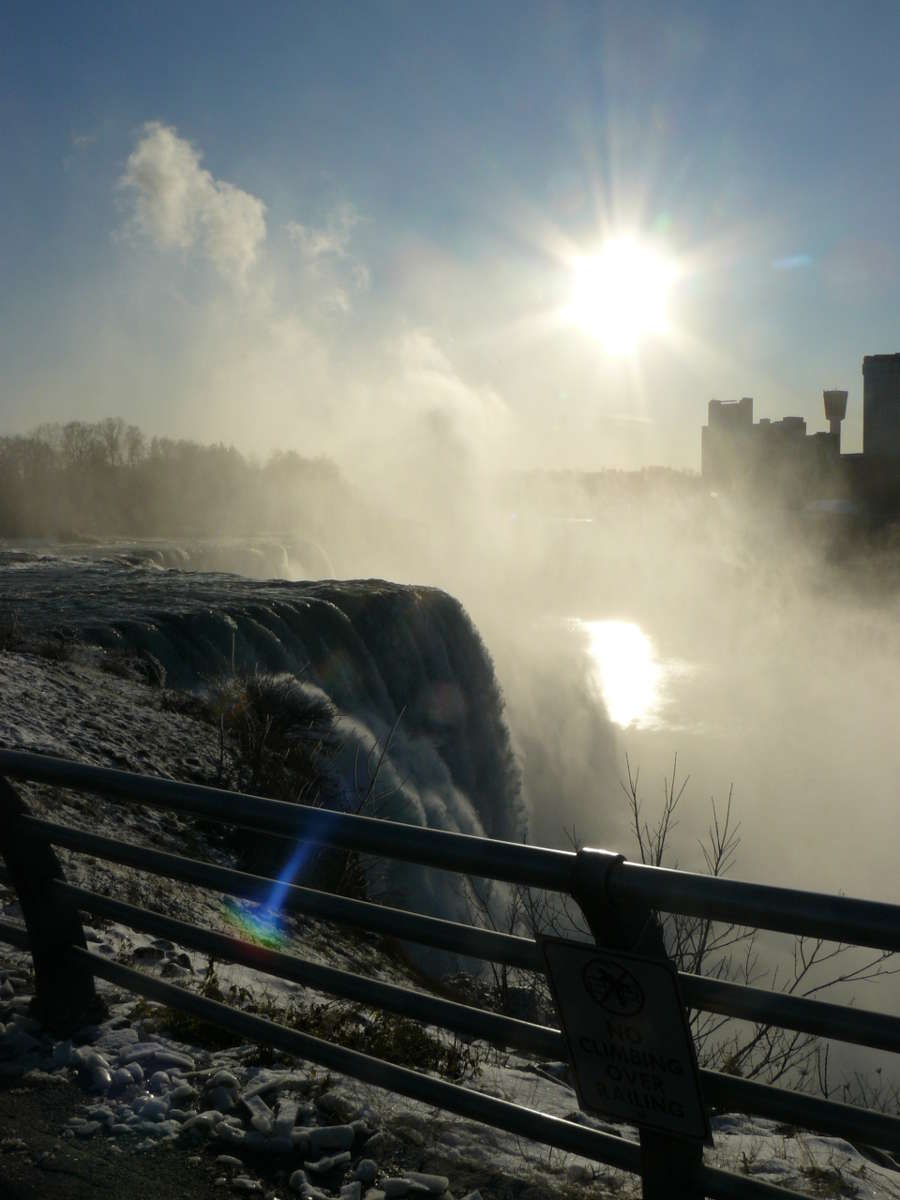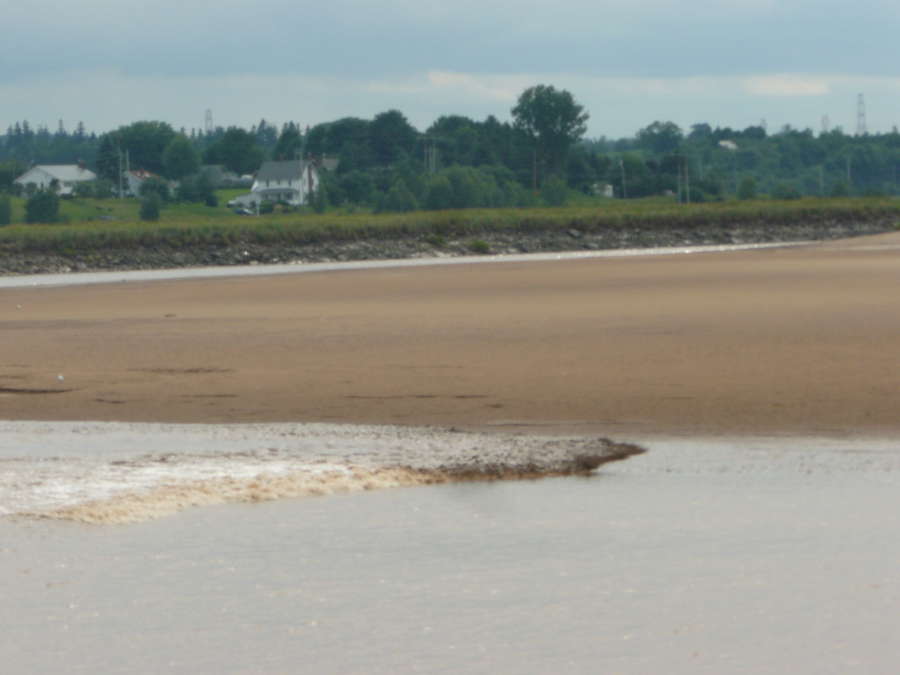 Location Taken: Truro, Nova Scotia
Location Taken: Truro, Nova Scotia
Time Taken: July 2012
Have you ever heard of a tidal bore?
You only find them in a few very specific places in the world, where the land around a bay or river just happens to have a funnel-shape that’s pointed in the right direction AND it’s an area with a rather large difference between high and low tide.
Essentially what happens is the river flows upstream when the tide comes in, with a visible wave and everything.
All the water on the planet is getting pulled by the moon’s gravity as it circles the planet, forming a bulge of water moving around the planet as well (it’s actually an oval interposed on Earth’s sphere, since there’s actually a bulge on the other side of the planet from the moon as well as on the side facing the moon, thanks to how gravity works.) In those spots with those specific conditions I listed, the water rushes in so fast and with just so much water that even the liquid state of water can’t equalize it fully. So yeah, wave.
This particular bore is found on the Salmon River going through Truro, Nova Scotia, a town located on the tip of the Minas Basin portion of the Bay of Fundy, home of the most extreme tidal differences on the planet. It was at one spot in the Minas Basin where they measured a difference of 55.8 feet, which just gets more and more impressive the more you think about it.
I actually hadn’t expected to see the tidal bore. We were merely passing through Nova Scotia on our way to Newfoundland, with no plans to do anything more than drive past Truro on the highway, and the tidal bore only happens twice a day. It would take a rather large coincidence for us to be passing by at just the right time to stop and see it happen.
I love it when those types of coincidences actually happen.
Due to another coincidence, there had been rain the night before and we stopped at a hotel rather than camp. And well, the hotel had internet, and I decided to look up the tidal data for the Bay of Fundy for the next day, just to see what stages of the tide we’d see the next day. That’s where I found the info on the tidal bore on the Salmon River, which has a great viewing spot right off the highway we were about to travel on. And it was within the range of time that we might be passing by.
Sure enough, despite all the random delays and lighthouse tours and miniature horse shows we happened across earlier that day, we just happened to come up to that exit off the highway just five minutes before the projected time for the bore.
Which was a good amount of time for us to find the viewing area (it was well-labeled), find parking, and join the large crowd already waiting for the bore. And sure enough, just a few minutes after the projected time (there’s a margin of error), there was that rather impressive wave coming upstream towards us.
It was irritatingly hard to photograph.
I mean, it’s a muddy wave! Most of the impressive stuff comes from realizing that the wave is coming upstream (which actually makes it pretty noisy), and in watching the large sandbar in front of you vanish under the water as the tide level rises. And this bore moves rather quickly, so I didn’t get too many chances at photos, especially since I wanted to, say, actually look at the wave rather than the camera.
It’s much better in video. Luckily I found one that someone else put on Youtube. Also coincidentally, it was taken from pretty much the exact same spot that I took this photo.
That one’s only a small coincidence, though. It WAS one of the best viewing spots for spotting the wave first thing as it came in, and it was far enough from the crowd that you don’t catch the crowd noise. Great spot for photography and video, really.
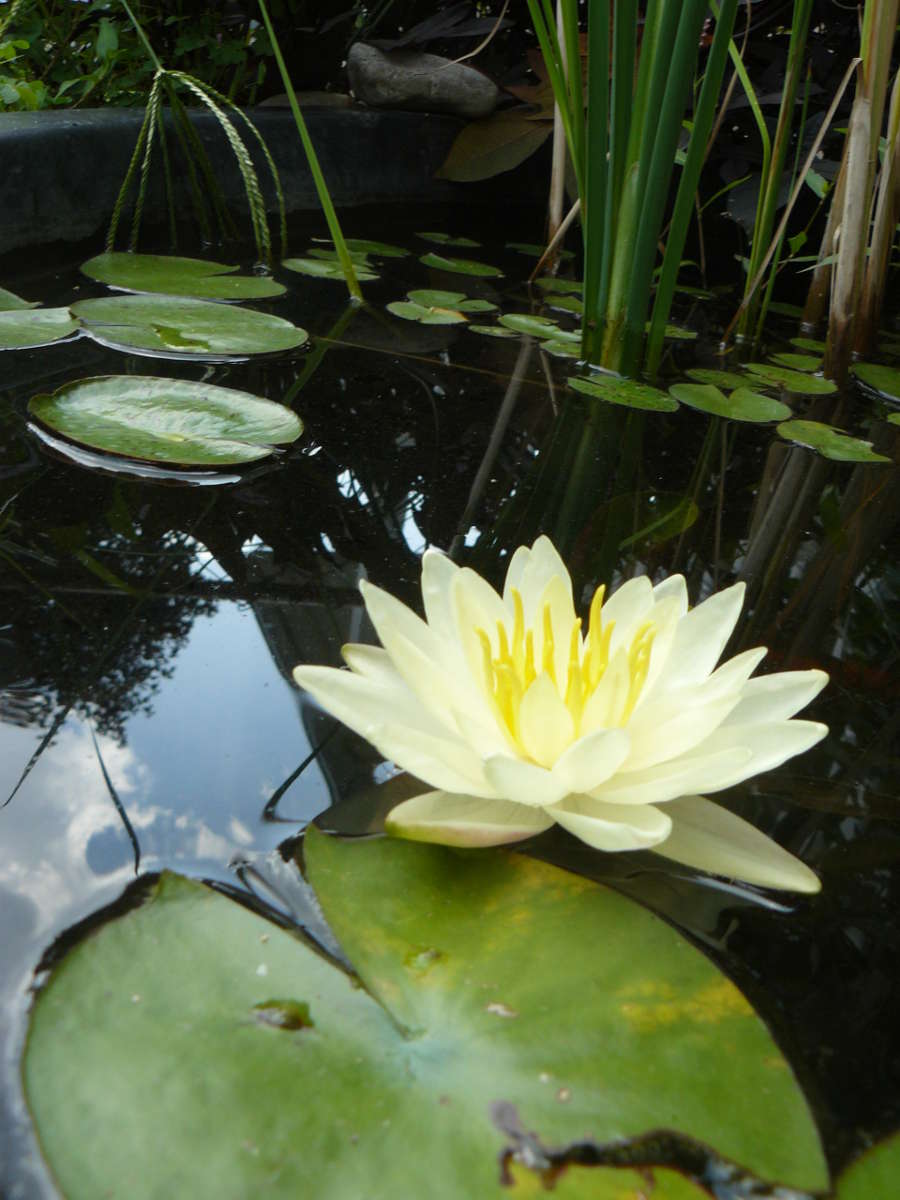 Location Taken: Savage, Maryland
Location Taken: Savage, Maryland
